
Prompt Images
*Programming note: I’m trying out a new “Footnotes for the Fastidious” section where I dive deeper into some issues, for those who crave a little more detail. This is an experiment so we’ll see if anyone finds this useful. The most important thing to understand is that if you don’t care about seeing more details you can skip this section.
1. Angels & Demons

Perhaps you’ve heard of antimatter from reading Dan Brown’s Angels & Demons, in which an antimatter weapon is used as a plot device. The plot also involves Illuminati, a Vatican conspiracy, and something called The Path of Illumination.
A quick aside, just to clarify where I stand on Dan Brown. I’ve read Angels & Demons as well Brown’s The DaVinci Code and The Inferno. I’ll state for the record that I enjoyed them all. I personally think Dan Brown is a masterful storyteller who has perfected the art of getting the reader to ask, What happens next?! This, despite agreeing with his critics that he has an abysmal command of actual words. Don’t @ me.
What about the content, though? Are the plot devices as ridiculous as his prose? I am unqualified to make pronouncements on the Illuminati and Vatican conspiracies.
But the antimatter. Are antimatter weapons a thing? And, while we are on the subject, what the hell is antimatter, anyways?
Luckily, these questions are squarely in my wheelhouse.
2. Matter Through the Looking Glass
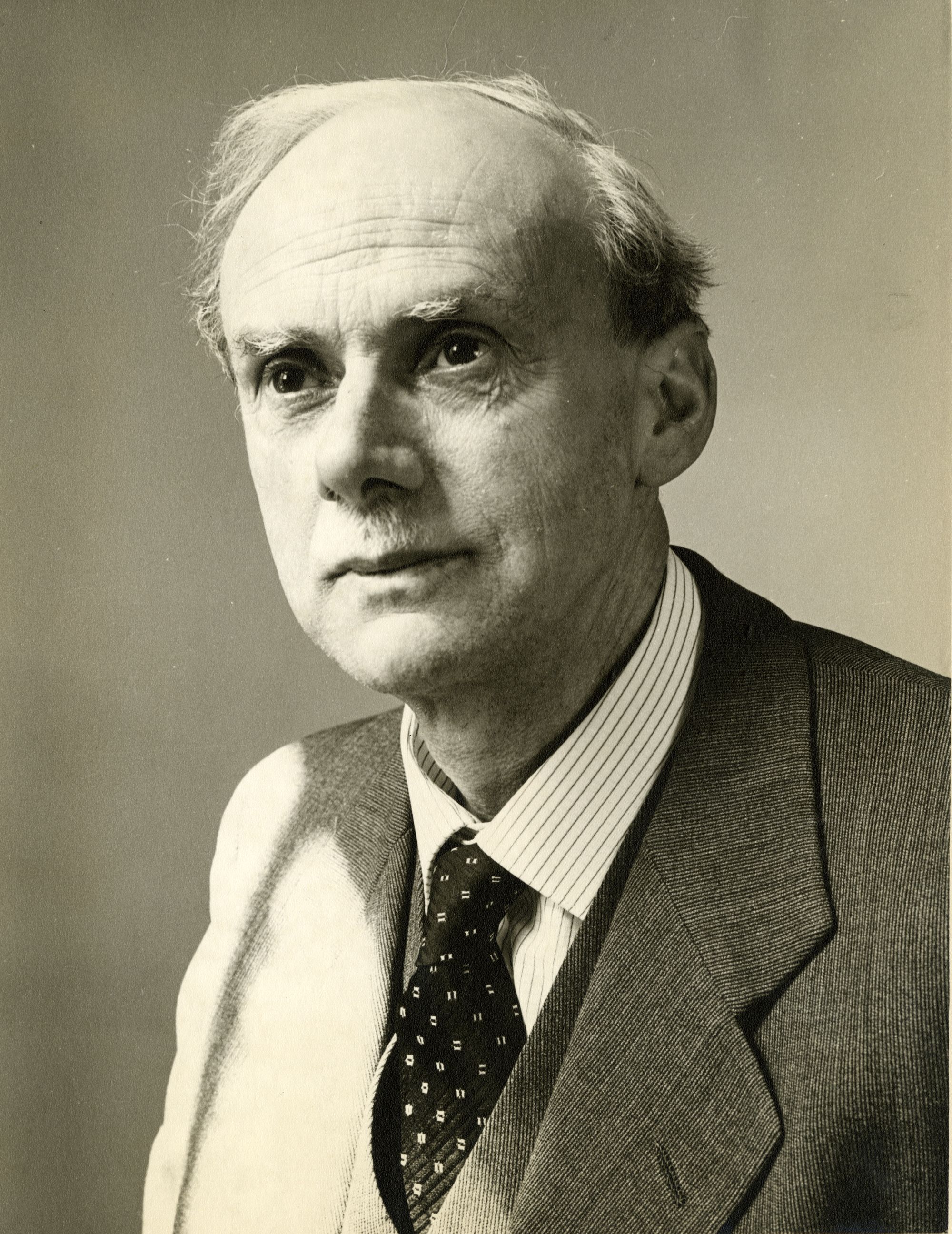
Paul Dirac
In the late 1920s, physicist Paul Dirac was “playing around with equations,” as he put it. At the time physicists sought a framework to reconcile the nascent theories of quantum mechanics and Einstein’s relativity. The problem was that the Schrodinger Equation—the F=ma of quantum mechanics—treated space and time in separate (and unequal) ways. Since the essence of relativity is that space and time are in some sense two sides of the same coin, any equation that wants to play nice with relativity needs to treat space and time as equals1.
Eventually, Dirac found an equation that worked for electrons. That is, his equation agreed with the quantum nature of the electron and it treated space and time equivalently. The one hiccup was that the equation predicted particles with negative energies. That should have been a deal-breaker, but quantum mechanics was so strange that Dirac decided to press on anyways.
Dirac hypothesized that the negative energy solutions might correspond to electron-like particles. These electron-like particles would have all the same properties of an electron (such as an identical mass) with one exception: electric charge. The new particle would have the opposite electric charge: (+1) to the electron’s charge (-1).
Less than a year after Dirac’s prediction that the electron had a long lost twin, the “positron” (positive electron) was observed in a lab. Over the years physicists would come to learn that there’s nothing special about electrons. It turns out that every known (massive) particle has an antimatter partner. For every quark, there is an antiquark. For every Oscar, there is a Felix.

As quarks can be combined to make protons, you can make antiprotons by combining antiquarks. And antihydrogen by combining antiprotons and positrons (recall a normal hydrogen atom is just a proton and an electron).
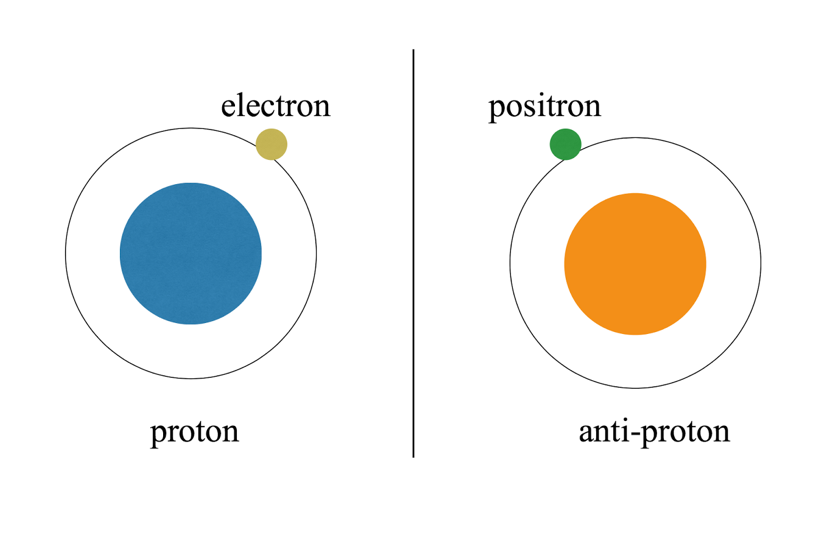
Hydrogen (left) and antihydrogen (right)
In some sense antimatter is a misnomer. The ‘anti’ has nothing to do with mass. It has to do with electric charge. If a particle has a charge, then somewhere in the universe (or at least in a physics textbook) there is a particle identical to it in all ways save the charge.
3. Interlude In Which I Imply Paul Dirac is the John Galt of Physics
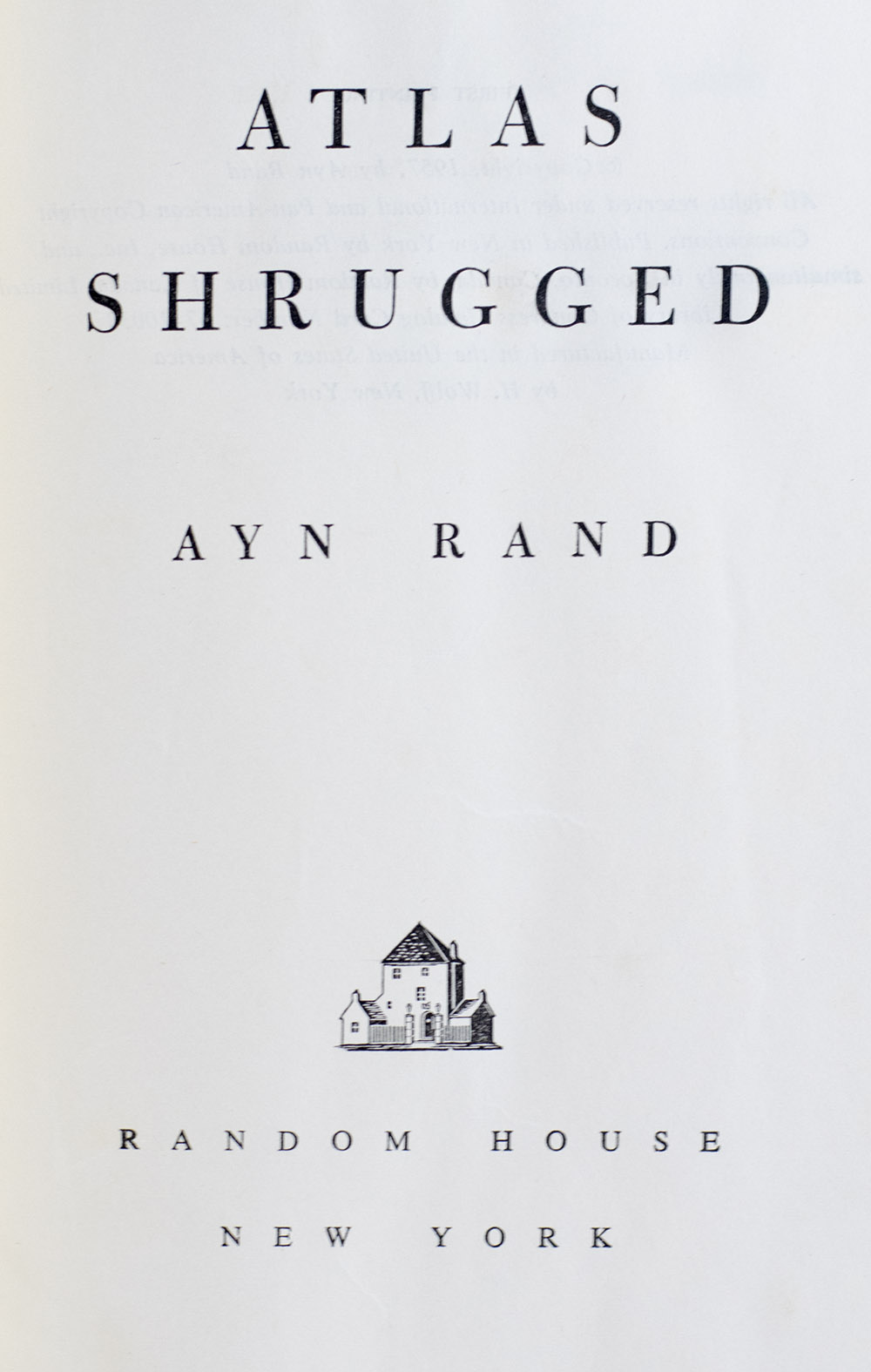
Before we proceed, can we stop and ponder a moment on what Dirac did? In the 1920s, physicists knew about four particles: electrons, protons, neutrons, and photons. Dirac played with equations for a few months and produced a brand new particle—increasing the number of known particles by 25 percent for the cost of just a few pencils and a Trapper Keeper. That is some serious ROI.
Meanwhile, the geniuses at CERN have spent billions of dollars on the Large Hadron Collider and have in the last eight years found only one new particle: the Higgs Boson. Which everyone was expecting anyways.
I think Dirac sitting around and “playing around with equations” should go down in history as one of the most amazing accomplishments in physics, if not science.
Which is why for the life of me I will never understand why some folks—who are older than 10—are content to do word searches in their spare time. Wouldn’t we all be better served playing around with equations, like Dirac?
I know that’s just wishful thinking, though. Ayn Rand and Mitt Romney are probably right: The world will always be made up of the makers and the takers.
I suppose I should just be thankful for makers like Dirac.
4. Antimatter: What Is It Good For? (Almost) Absolutely Nothing

OK, Dirac predicted the positron and some other folks discovered it in experiments. What does this mean for physics, exactly?
For the most part, antimatter doesn’t actually matter much (heh). There are a few technological applications in medical imaging, but otherwise almost everything we interact with in our daily lives is built from your garden variety matter.
The problem is that matter and antimatter don’t play nicely. In fact they annihilate each other when they meet. To understand why, recall Einstein’s famous equation E=mc2. This equation asserts the “equality” of matter and energy (well, equality up to a factor of c2, that pesky speed of light that shows up everywhere in relativity). According to this equation, mass is just a particular form of energy.
This equation doesn’t matter much in our daily lives, but it matters a lot at the atomic and subatomic realm. There, in the places where relativity meets quantum mechanics you can actually create new particles on the fly, so long as you provide enough energy.
Say a scientist wants to create an electron. She can just supply an amount of energy equal to the mass of the electron multiplied by c2. It’s not a negligible amount of energy, but it’s very doable. She can, for example, just shoot off a high energy photon and wait for quantum mechanics to magically transform that photon energy into other particles of equivalent energy.
But she can’t transform a high energy photon into only an electron, even if the equation E=mc2 is satisfied. Because there is also conservation of charge. (Physicists love their conservation laws). Photons don’t have any charge, and electrons have (-1) charge.
So what does nature do? It creates a new particle to balance out the electron’s charge. If scientists had a photon with a high enough energy, they could create a pair of particles: an electron and a positron. The electron’s negative charge is canceled by the positron’s positive charge and so you end up with a net charge of zero. Conservation of energy? Check. Conservation of charge? Check.
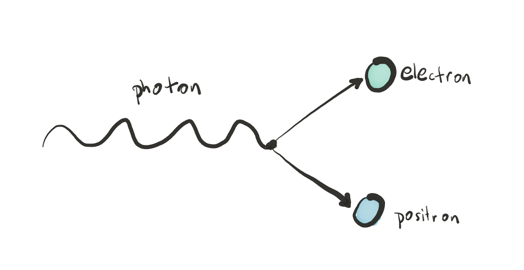
And if you can go from photon to electron + positron, why not the other way around?
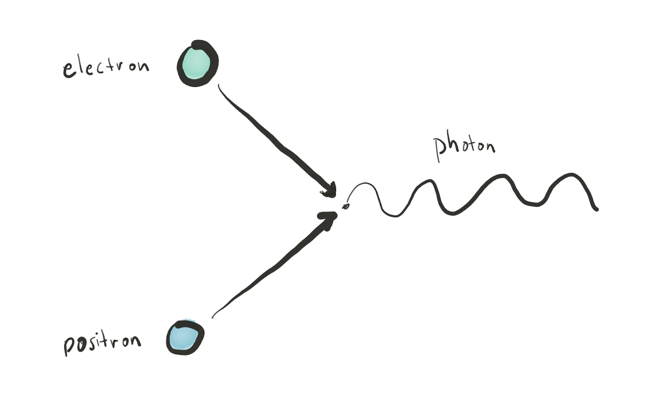
And this is the problem. When electrons and positrons meet, they vanish and leave photons in their wake. The same is true when any other kind of massive particle meets its doppelgänger.
This is why we can’t have nice things… made of antimatter. Antimatter iPhones would annihilate us the moment we touched them, which would not be great for Apple’s bottom line.
5. Weaponizing Antimatter
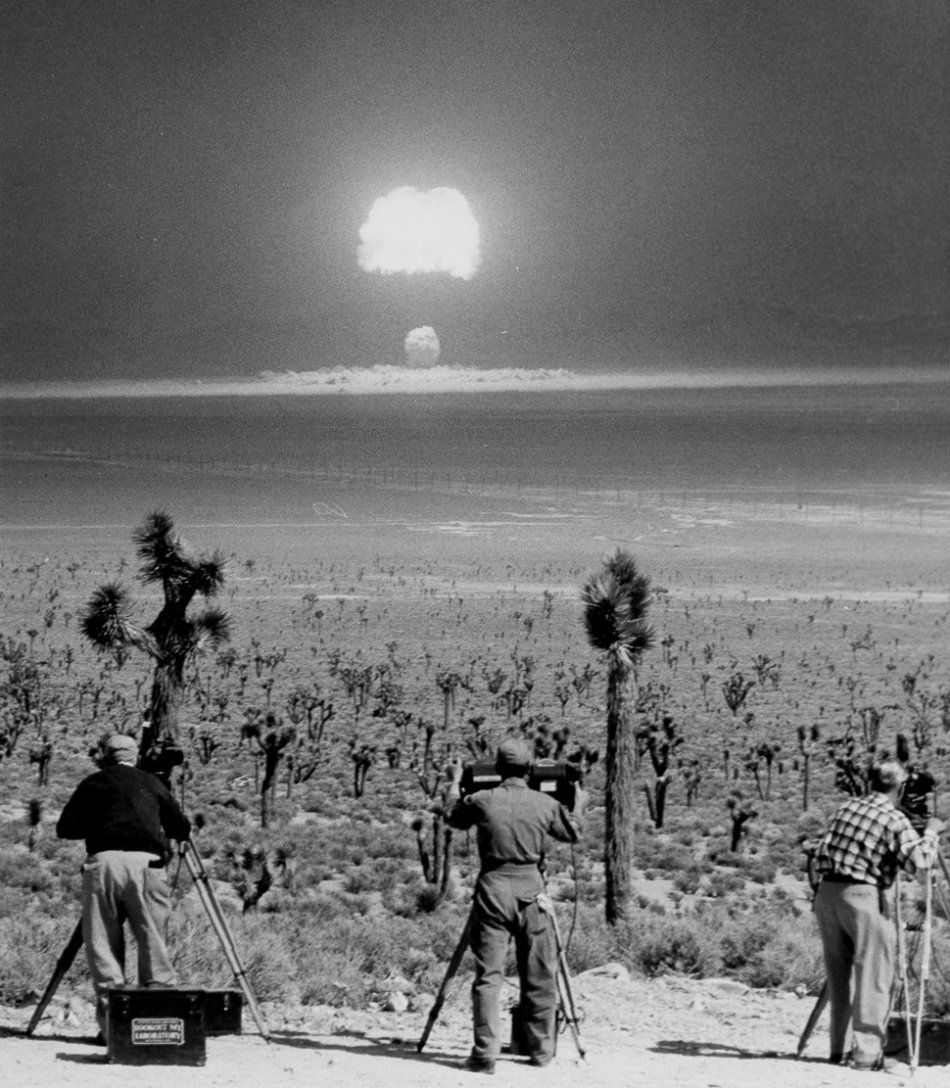
Making a bomb is about releasing energy from some source, as I wrote recently. In conventional bombs that use chemical explosives, the energy that binds atoms within molecules is converted into thermal energy. In nuclear bombs, the energy that binds protons and neutrons together is converted into into thermal energy. Thermal energy is just a fancy way of saying photons.
If there’s anything that antimatter is good for, it’s taking energy locked inside of massive particles and converting that energy into photons thanks to E=mc2. It is actually an even more efficient means of generating explosive energy than nuclear bombs, which are already way more efficient than chemical bombs.
Consider that nuclear weapons may only convert about 0.4 percent of the total “energy” locked inside of the bomb’s atoms to thermal energy, because nuclear weapons just split atoms apart (or fuse them together) and release some energy in the process while leaving most of the protons, neutrons, etc. intact.
In contrast, in an antimatter weapon, all particles might conceivably be converted into pure thermal energy. So for the same sized weapon, an antimatter device may be 100 or more times as powerful.
And yet, for all their theoretical advantages, antimatter weapons don’t actually exist.
6. Where Have All the Antimatter Particles Gone?

Bombs are just things that release a lot of energy very quickly. But you need to start with something that already has a lot of energy locked inside of it.
Physicists do that by either a) creating such an energy source themselves, which costs at least the amount of energy they want to store or b) using an energy source that already exists. In nuclear weapons, nature did most of the work—packing insane amounts of energy into atoms back when they were created during The Big Bang (or in later supernova explosions). There’s still some work in refining the nuclear material and building the bomb, but it’s efficient compared to starting with pure energy and trying to “make your own atoms” from the outset.
On the other hand, there’s no antimatter just lying around in the universe. It does get created in tiny collisions between particles all the time, but it usually vanishes soon after. There are no massive “lumps” of antimatter that we can dig up from the earth.
So any antimatter weapon would require a ton of energy input because humans have to make all the antimatter we’d want to use first2. It’s way more expensive and time-consuming to create our own antimatter than to just dig up uranium, refine it, and build a bomb. Or did you think Iran hadn’t already considered that option?
But all this just begs the question: Why isn’t antimatter just lying around? According to The Big Bang Theory (the real one, not the show) when the universe exploded onto the scene, it should have generated equal parts of matter and antimatter—in perfect balance with each other.
And yet clearly somewhere along the way, something happened to most of the antimatter.
What the hell is antimatter now becomes where the hell did the antimatter go?
This latter question actually has it’s own name in physics: the Baryon asymmetry problem.
There’s a Nobel Prize waiting for the person who finds a convincing solution to it. So what do you say you put down that wordsearch, pick up a pencil, and do your part in helping to find those missing particles?
Footnotes for the Fastidious:
1 In this context, equal doesn’t mean “exactly the same.” Space and time aren’t equal anymore than clocks and rulers are “equal.” But in relativity, space and time get merged into a single spacetime so that instead of having three dimensions of space and a separate weird thing called “time,” we have a four-dimensional spacetime: three dimensions of space and one dimension of time. To make sure your equations respect this four-dimensional picture of spacetime, your space and time variables need to be treated “similarly.” Schrodinger’s equation looks like this:

Nevermind what that gibberish means, but note only that (in the denominators) the x is squared and the t is not squared. That shit won’t fly in relativity. You need an equation that has the same powers of x and t, which is what Dirac achieved with his equation.
2 One question that may be nagging some readers is the following: If matter and antimatter annihilate each other, how could you store a lump of antimatter to make a bomb in the first place? Wouldn’t whatever you stored the antimatter in be made of matter and therefore annihilate your antimatter before you could ever deploy your bomb?
In fact you can store antimatter in a “container” of sorts that prevents such annihilation. You do this not by making a container with conventional walls, but by making a container that suspends the antimatter using some kind of forces, like magnetism. Forces like magnetism don’t know or care about matter vs. antimatter. That’s why electrons and positrons can come together and annihilate in the first place: they are attracted by the same electromagnetic force that causes electrons and protons to be attracted to one another.


